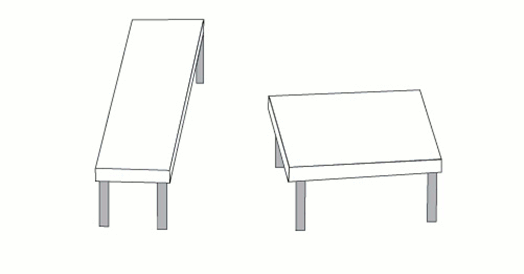Giraffes enjoy a wider perspective than most mammals, thanks to their long necks. We humans, too, enjoy richer perspectives because our bigger brains enable abstract reasoning.
Our brains combine the inputs from our senses to form our views about society, sex, life, the universe, economics, politics, friendship, justice and everything else.
Usually, our senses serve us well, but not always. Sometimes, they provide us imperfect information. As a result, the models and theories that our minds create of the world around us and of our place in it, deviate to a greater or lesser extent from reality. Unchecked confidence in our models can stretch the band with reality until it breaks and when this happens, we have a crisis and often not just one of confidence.
Advertisement
"Whatever I have accepted until now as most true has come to me through my senses," wrote Descartes in 1639. "But occasionally I have found that they have deceived me, and it is unwise to trust completely those who have deceived us even once."
Let's use vision, our strongest sense, to illustrate how our senses can in fact deceive us.
Most of us believe our eyes without question. Looking at the drawings below we are confident that the two tables have different shapes. A gambler would bet money on it -- and lose. Few of us would pull out a ruler to measure the tables. When we are confident of what we see we often feel no need to verify it.

Figure 1 Roger Shepard's table
The above picture tricks us into believing that the table on the left is longer and thinner than the table on the right. Only when we compare length and width using a tape measure, do we learn that our mental image is wrong.
Advertisement
Even after we learn that the two tables are in fact the same, the illusion persists. Bias can trump reason and misperceptions persist even when we know them to be wrong. Try if you like, but you will not be able to see the two tables as having the same length and width. The best you can do is to actively ignore your perception and trust what you know to be true because you have physically measured it. This requires mental exertion.
There are many ideas that we have come to accept as true knowledge, even though they are demonstrably false. For example a basketball coach directs players to pass the ball to a specific player because he perceives this player to have a "hot hand". Unfortunately his confidence in this imaginary rule induces him to choose a tactic that is detrimental to the team's interest.
Statistical analysis has proven that the perception of the "hot streak" (or hot hand) is a fiction of the mind (Gilovich and al. [1985]) and if the coach had studied the research then he would direct the team to do the opposite, i.e. to pass the ball to the lesser scoring players. Passing the ball to players with a lower scoring percentage would result in a higher total score because the lesser scoring players tend to increase their percentages whilst those starting on a high percentage tend to see them decrease.
Discuss in our Forums
See what other readers are saying about this article!
Click here to read & post comments.
7 posts so far.